- News
- Reviews
- Bikes
- Accessories
- Accessories - misc
- Computer mounts
- Bags
- Bar ends
- Bike bags & cases
- Bottle cages
- Bottles
- Cameras
- Car racks
- Child seats
- Computers
- Glasses
- GPS units
- Helmets
- Lights - front
- Lights - rear
- Lights - sets
- Locks
- Mirrors
- Mudguards
- Racks
- Pumps & CO2 inflators
- Puncture kits
- Reflectives
- Smart watches
- Stands and racks
- Trailers
- Clothing
- Components
- Bar tape & grips
- Bottom brackets
- Brake & gear cables
- Brake & STI levers
- Brake pads & spares
- Brakes
- Cassettes & freewheels
- Chains
- Chainsets & chainrings
- Derailleurs - front
- Derailleurs - rear
- Forks
- Gear levers & shifters
- Groupsets
- Handlebars & extensions
- Headsets
- Hubs
- Inner tubes
- Pedals
- Quick releases & skewers
- Saddles
- Seatposts
- Stems
- Wheels
- Tyres
- Health, fitness and nutrition
- Tools and workshop
- Miscellaneous
- Cross country mountain bikes
- Tubeless valves
- Buyers Guides
- Features
- Forum
- Recommends
- Podcast
review
£2,500.00
VERDICT:
Over-weight, over-geared and not really wanting to go over there
Weight:
10,860g
Contact:
At road.cc every product is thoroughly tested for as long as it takes to get a proper insight into how well it works. Our reviewers are experienced cyclists that we trust to be objective. While we strive to ensure that opinions expressed are backed up by facts, reviews are by their nature an informed opinion, not a definitive verdict. We don't intentionally try to break anything (except locks) but we do try to look for weak points in any design. The overall score is not just an average of the other scores: it reflects both a product's function and value – with value determined by how a product compares with items of similar spec, quality, and price.
What the road.cc scores meanGood scores are more common than bad, because fortunately good products are more common than bad.
- Exceptional
- Excellent
- Very Good
- Good
- Quite good
- Average
- Not so good
- Poor
- Bad
- Appalling
While the Specialized Sequoia Expert looks a belter on paper, and I was really looking forward to riding it, in the real world I found it disappointing.
The Sequoia is Specialized's answer to the booming adventure bike category – well, one of its answers, as the company has invested in the new trend quite heavily, its racier Diverge and rugged AWOL bikes sitting either side of the Sequoia in its bulging Adventure Bike shed. According to the blurb, the Sequoia combines both road and adventure in a "single, genre-shattering bike".
> Find your nearest dealer here
The Expert is the top model in the Sequoia range of three, and looking at the spec sheet it does appear to be a bike well designed for that brief of blurring the lines between road and dirt, with a smattering of touring and a pinch of adventure thrown in. The frame is bristling with bosses and eyelets for full outdoorsing: there's room for five water-bottles if you so want, two in the traditional down tube and seat tube positions, one underneath the down tube by the bottom bracket, and one on each of the fork tines.
Those on the down tube come in a grouping of three so you can use a Specialized SWAT cage for a bit of extra stuff space, or just have an alternative bottle position, lower down maybe to make room for a frame bag. The bosses at the bottom bracket area could also be used for a tool pod, and the fork mounts are perfect for further gear in cargo cages.
More traditional touring pannier baggage is catered for with a full complement of rack and mudguard mounts front and back. There are also ports for dynamo wiring, and routing for Shimano Di2 electronica.
Other details that are a thoughtful nod to being a long way from anywhere include the fact that all the spokes for both wheels are the same length, the drive and non-drive side on the rear wheel are the same measurement as those on the front, so you only have to carry one length of spoke. The rear brake and gear cables are organised neatly under the down tube through bolt-on guides, making it easy to maintain either, or to replace the gear cable with a Di2 system. And finally, the chainset spins on a traditional threaded FSA MegaEvo bottom bracket rather than a press-fit unit for further longevity and easier maintenance potential.
The bones of the bike are made from a steel that Specialized labels as Premium Cr-Mo tubing, and it's size specific to ride the same for bigger and smaller riders alike. While it might look a bit plain, a closer look reveals subtle details: the welding is neat and tidy, those thin seatstays are flattened horizontally along their mid-section, and the fatter chainstays are similarly squashed but vertically. That head tube is tapered, the rear dropouts for the 142x12mm bolt-thru axle are neatly executed, and flat-mount disc mounts keep the frame clutter free. It looks a handsome bike.
Gears and brakes
SRAM provides gears and brakes, both at Force level – well, most of them, there's an incongruous yet compatible Shimano cassette on the back – and it all does its job with little comment. All that can really be said is that the gears are more clacky and the brakes feel a little bit more spongy than the similar offerings of Shimano.
While it's bang on trend and removes something in both the left hand lever and the entire front derailleur department that could go wrong when you're in the wilds, the simple 1x11 gearing on the Sequoia Expert is not without its flaws. Most importantly, it's pretty badly over-geared. The 42-tooth single ring on the FSA SL-K Light crankset is too large, even with the wide range gear spread on the Shimano Deore XT cassette. Even without any baggage on, it can be quite a struggle to haul the Sequoia up a hill, especially off-road, which is exactly the terrain the bike is designed to be pointed towards, and you're shifting into the bigger sprockets at the back a lot quicker than you might like. The bike's rugged weight doesn't help the hill climbing equation here either.
That wide range cassette also has its issues: you could pitch a bivy-bag through some of the gaps between the sprockets, especially towards the larger teeth (it goes 11-13-15-17-19-21-24-28-32-37-42), and these can get very annoying. Okay, it's not the end of the world, but if you're a rider who's used to a particular cadence (I know, maintaining a consistent cadence is a terribly old-fashioned concept) then you'll frequently find yourself looking for a gear that's somewhere in between two gears to avoid either mashing or spinning. It's something that makes itself most known on long, steady drags, the kind of thing that's quite common on the sort of gravel gradient the bike's itching for.
A simple change to a smaller chainring would help both your legs and your range, especially if you're planning a lot of packed riding, or you could go down a model to the Elite with its 48/32 double chainset and 11-36 cassette, more and less gappy gears to choose from, and easier climbing/luggage hauling potential. You could spend the £1,000 price difference on a nice adventure somewhere too.
The derailleur hanger is replaceable, which is a good thing, but it's only held on with one bolt. That means it can rotate a bit if it's knocked when the rear wheel is out, and block the threaded right-hand hole for the bolt-thru axle when you try to put the wheel back in, leading to much confusion and muttering. Just a small thing to look out for.
Finishing kit
The Body Geometry Phenom Comp saddle is firm but comfortable, at least to this bum, but that hobo-chic canvas covering is probably the worst thing you can put on an adventure bike: it's rough on cycle clothing and absorbs and holds onto any dirt and moisture that might be splashed through or come from the skies. And it never quite looks the same again after its first grubbing. It also takes a lot longer to dry than a traditional leather/leatherette saddle covering. Something smooth, shiny and wipe-clean please.
The same canvas material is used for the bar tape and it works better here. Slightly padded, it offers a good degree of grip and although, again, it's a bugger to clean, it kind of develops a pleasing patina.
In a similar 'aesthetics over function' vein to the saddle and bar tape, the satin paint of the Sequoia looks lovely and gives the bike a subtle and pleasing backwoods feel, but it does like to hold onto grime particularly well, especially of the oily kind, and it's an annoyance to try to clean. Not that this is a bike that, if used properly, is going to get regular cleaning, but, you know.
The Specialized Adventure Gear Hover handlebar is definitely a conversation starter, but once you're on the bike you don't really notice that love-or-hate rise away from the stem. That upward bend does mean you might not need to put so many ahead spacers under the stem to get a comfortable position, if that aesthetic bothers you more than riser dropped-bars, but it does mean there's useable space to bolt whatever lights and gadgets you might want to put there. However, if you're using a handlebar-mounted bikepacking bag, the rise might allow a little extra room between hands and bag when riding on the tops, which is quite a useful feature.
With a shallow bend drop of 123mm and a 75mm reach the Hover bar has a bit of flare; at 10 degrees it's not too much so it looks silly, and it offers a good mix of comfort and control off-road. I'm not especially a fan of a flared bar, they tend to put my hands in an awkward position on both the hoods and in the drops, but I felt fine on the Hover, though I wouldn't want it any more bowed.
In the same love/hate looks department is the Specialized CG-R FACT carbon seatpost. That weird shape is there to allow the combination of the carbon post and squishy Zertz insert to give 18mm of vertical compliance without altering the cockpit dimensions too much. It's not pretty but it does reduce buzz at the rear end of the bike, and allows you to stay seated longer, especially off-road, where it takes the edge off high-frequency micro-bumps that can be tiring on a behind.
There were issues with the clam-shell design of the saddle clamp, allowing the saddle to initially tilt slowly backwards over a ride, but a liberal smearing of gritty carbon paste to the internals soon put a stop to this. There's a stealth black yet reflective sticker on the back of the post, which is a neat feature, unless you're carrying seatpost or saddle-mounted luggage, when it's completely obscured.
Wheels
The wheels are Specialized's own handbuilt Adventure Gear Cruzero models. Bolt-thru hubs front and back are tightened on with a 5mm Allen key rather than a lever, which makes the bike look sleek and is a handy anti-theft device – but a little bit of an annoyance in day-to-day usability.
Old school box-section rims with a 25mm internal width give the tyres a nice wide profile to play with, those tyres being Specialized Adventure Gear Sawtooths. There's a big clue in the name as to the pattern of their tread. The 700x42mm tyres are effectively bald but with a zig-zag pattern cut into them, and as such they roll swiftly on tarmac and handle a surprising amount of off-road trails remarkably well, only getting awkward when things get muddy, as you might expect looking at the inverse tread. It fills up pretty quick and gets slidey in more fluid mud.
Handy spoke length similarity aside, the wheels are a bit of a problem: they're weighty. The rear comes out of the frame at a hefty 2.61kg (5lb 12oz) with tyre and cassette attached, while the front wheel is 2.04kg (4lb 8oz). That's a serious amount of heft to be spinning around; I've got mountain bike wheels a lot lighter. It can be felt when riding the Elite, too, as it takes some time to get the bike up to speed. Once it's there it cruises along quite well if you can keep on top of the momentum, but as soon as you tire or hit a gradient it gets to be stiff work again. It's the sort of weight that lets you know every half degree increment of ascent angle.
The ride
The Sequoia is a strange bike to ride. Briefly put, it feels encouraging to ride and yet its weight and gearing puts an end to that enthusiasm after a while, and any adventure in its character gets quashed as it chooses to turn for home instead.
The feel of the Sequoia Expert is generally really quite pleasing. It has what Specialized calls 'Adventure Geometry'. It says this geometry is unique in that it skews the line between a traditional road bike and a dedicated touring rig. What that means in real life is that it's an engaging bike to ride; the steering is nippy enough to make it feel fun without being twitchy and therefore a handful if you're heavily loaded up. The top tube is a little longer than is usual for its given size, with the stem correspondingly shorter to compensate, which helps lengthen the wheelbase for more stability. The bottom bracket is low to aid matters as well, which gives the bike a general well grounded but chirpy demeanour. On the road it doesn't feel lazy, and you can chuck it about off-road if you want without it feeling all wallowy, and yet it's not a handful at the end of the day when you're tired.
Although steel may be real and all that, the Sequoia Expert frame doesn't really demonstrate the type of qualities that the material is oft quoted as having by fans, aside from being realer. It's a solid base on which to build a bike, and while that's a good thing for strapping chunks of freight to and stops it behaving al-dente under load, it does make the Sequoia feel quite lifeless when pedalling burden-free. If you think really hard you can feel the tiniest of that desired steel spring in the frame, but it's the faintest of muted whispers.
While the Specialized fork is made from its FACT carbon and bang up to date with a tapered steerer tube, bolt-thru 100x12mm hub and a flat disc mount, and handily detailed with adventure-ready bosses, it is a rigid thing. The flat-sided design of the fork makes it several times deeper than it is thick, which, while good as a flat base for those cage-mounting bosses and giving lots of tyre clearance, makes for a disappointingly solid ride up front, in spite of the balloony 42mm tyres.
Conclusion
Despite being tagged as an adventure bike, it doesn't really live up to that promise. It does have all the braze-ons and bosses and a load of other details that you'd appreciate when heading into the hills for a while, but it's not a bike that encourages you to go that far. There was too much time where pedalling the Expert was just a bit of an effort, and a lot of that riding time was without feel-deadening and cumbersome packs and luggage strapped to it. I know it's not meant to be a light and fast race bike, although the geometry does make it a giggle to ride, but it felt a bit like taking a slightly aged Labrador for a walk – it would be keen for the first half and then would want to sit down and have to be dragged home for the last bit.
On a more practical level, while the weight isn't such an issue on a bike designed for a multitude of terrains, touring and carrying loads, where a certain amount of sturdiness is actually required for stability, every pound extra over a less chunky bike is a pound less kit you can carry for the same effort, and if you're serious that can be quite a trade-off.
> road.cc Adventure and Cyclocross Bike of the Year 2016-17
After falling a little bit in love with the Diverge I was very much looking forward to the Sequoia. I thought its more rugged character would be right up my street, or gravel path. I had visions of disappearing into the horizon on long days out, a large bikepacking bag full of provisions and extra layers, but thanks to the grunty gear selection and the bike's habit of getting reluctant after a couple of hours, they never came to be. I'm a great fan of 'just one more hill' – ticking another lump off before heading home is never a problem – but the Sequoia never really wanted to do that, it was always happy to cut the ride short and just head straight for home. An odd trait in a bike designed for adventure. I spent a lot of time wishing I was on a bike that was either a bit lighter or had a more horizon-encouraging gear range.
I may be being unnecessarily harsh because I'm just disappointed. I like to travel far and with a certain purpose to my pedal stroke, and the Expert moniker, single-ring setup and £2.5K price tag led me to believe this Sequoia might be good at cracking off distance with fleet enthusiasm. It's not a bad bike by any means, and if weight isn't an issue for you, and you're happy to take the path less travelled at the pace dictated by the bike rather than by your legs, then the Sequoia Expert is a very, very capable bike for going all the way over there. Steadily.
Verdict
Over-weight, over-geared and not really wanting to go over there
road.cc test report
Make and model: Specialized Sequoia Expert
Size tested: 56
About the bike
State the frame and fork material and method of construction. List the components used to build up the bike.
Frame - Premium Cr-Mo size-specific tubing, internal light cable routing-ready, Adventure Geometry, flat disc mount, fender/rack mounts
Fork - Specialized FACT carbon, tapered, internal light cable routing, flat disc mount, waterbottle/rack/fender mounts
Front Wheel - Specialized Adventure Gear Cruzero
Rear Wheel - Specialized Adventure Gear Cruzero
Front Tyre - Specialized Adventure Gear Sawtooth 2Bliss Ready, 700x42mm
Rear Tyre - Specialized Adventure Gear Sawtooth 2Bliss Ready, 700x42mm
Crankset - FSA SL-K Light crankset, ABS Compact BB386 EVO, PF30 System Interface, 10-/11-speed, hollow, 147mm Q-factor, 110 BCD
Chainrings - Megatooth V2 XX1, 42T
Bottom Bracket - FSA MegaEvo, threaded
Shift Levers - SRAM Force Hydraulic Disc
Rear Derailleur - SRAM Force1 Type 2.1, long cage, 11-speed
Cassette - Shimano Deore XT, 11-speed, 11-42t
Chain - KMC X11SL-1 DLC, 11-speed w/reusable MissingLink
Front Brake - SRAM Rival 1, hydraulic disc, 160mm rotor
Rear Brake - SRAM Rival 1, hydraulic disc, 160mm rotor
Handlebars - Specialized Adventure Gear Hover
Tape - Specialized Adventure Gear S-Wrap Canvas Tape
Stem - Specialized Pro SL, alloy, 4-bolt
Saddle - Body Geometry Phenom Comp, hollow Cr-Mo rails, 143mm
Seatpost - Specialized CG-R, FACT carbon, single bolt, reflective, 27.2mm
Seat Binder - Specialized, alloy, 2-bolt, 27.2mm
Tell us what the bike is for, and who it's aimed at. What do the manufacturers say about it? How does that compare to your own feelings about the bike?
Specialized says: "We believe that at the heart of every rider is an adventurer, ready to seek out new roads, regardless of whether they're paved or not. And for this reason, we created a bike that's built to handle anything. The Sequoia Expert combines road and adventure in a single, genre-shattering bike."
They're not wrong you know, the Sequoia is a fun bike on both tarmac and off-road light trails, so you really can expand your bike riding horizons. There's all the bits you'll need for adventuring, just be prepared to ride to the bike's gearing and rolling weight.
Frame and fork
Overall rating for frame and fork
8/10
Tell us about the build quality and finish of the frame and fork?
The Expert is nicely put together, the frame has neat welds and the subtle paint job is good quality, if a little oil friendly.
Tell us about the materials used in the frame and fork?
Premium Cr-Mo size-specific tubing frame with a Specialized FACT carbon tapered steerer fork.
Tell us about the geometry of the frame and fork?
The Sequoia has 'Adventure Geometry' which is somewhere between road and touring geometry. That means the steering is still fun but it's stable enough for off-road and luggage use.
How was the bike in terms of height and reach? How did it compare to other bikes of the same stated size?
It's longer in the top-tube than a similar bike of similar size but that's compensated for by a correspondingly shorter stem.
Riding the bike
Was the bike comfortable to ride? Tell us how you felt about the ride quality.
The steel frame was quite solid with little of that oft-touted steel spring, but the CG-R seatpost took the edge out of bumps in the rear. Thanks to the slab-sided design of the carbon fork it wasn't the most comfortable front end.
Did the bike feel stiff in the right places? Did any part of the bike feel too stiff or too flexible?
It was a solid bike to ride, stiff with just the hint of flex in the frame, and a rigid fork.
How did the bike transfer power? Did it feel efficient?
Not especially well, the heavy wheels took some time to get going.
Was there any toe-clip overlap with the front wheel? If so, was it a problem?
No.
How would you describe the steering? Was it lively, neutral or unresponsive? The nice lively side of neutral.
Tell us some more about the handling. How did the bike feel overall? Did it do particular things well or badly?
When it came to handling it was a lovely bike to ride, cheerful steering while still being stable.
Which components had the most effect (good or bad) on the bike's comfort? would you recommend any changes?
The saddle and compliant seatpost worked well together, although the former might be too firm for some. The fork was jarring.
Which components had the most effect (good or bad) on the bike's stiffness? would you recommend any changes?
The fork felt too stiff; something with a little more give would have been nice.
Which components had the most effect (good or bad) on the bike's efficiency? would you recommend any changes?
A pair of lighter wheels could make the world of difference.
Rate the bike for efficiency of power transfer:
5/10
Rate the bike for acceleration:
4/10
Rate the bike for sprinting:
3/10
Rate the bike for high speed stability:
9/10
Rate the bike for cruising speed stability:
9/10
Rate the bike for low speed stability:
9/10
Rate the bike for flat cornering:
8/10
Rate the bike for cornering on descents:
8/10
Rate the bike for climbing:
4/10
The drivetrain
Rate the drivetrain for performance:
8/10
Rate the drivetrain for durability:
8/10
Rate the drivetrain for weight:
7/10
Rate the drivetrain for value:
6/10
Tell us some more about the drivetrain. Anything you particularly did or didn't like? Any components which didn't work well together?
It all worked well in that SRAM clacky way, but the gear ratios were too hard for the bike's intended use and too gappy for 'souplesse' pedalling.
Wheels and tyres
Rate the wheels for performance:
4/10
Rate the wheels for durability:
7/10
Rate the wheels for weight:
2/10
Rate the wheels for comfort:
7/10
Rate the wheels for value:
4/10
Tell us some more about the wheels.Did they work well in the conditions you encountered? Would you change the wheels? If so, what for?
The Cruzero wheels are backcountry ready with usefully the same length spokes all round, but they're comically heavy.
Rate the tyres for performance:
7/10
Rate the tyres for durability:
7/10
Rate the tyres for weight:
4/10
Rate the tyres for comfort:
8/10
Rate the tyres for value:
8/10
Tell us some more about the tyres. Did they work well in the conditions you encountered? Would you change the tyres? If so, what for?
The Sawtooth tyres worked well across all the terrains the bike was designed for, not good should it get muddy though.
Controls
Rate the controls for performance:
7/10
Rate the controls for durability:
8/10
Rate the controls for weight:
6/10
Rate the controls for comfort:
8/10
Rate the controls for value:
6/10
Tell us some more about the controls. Any particularly good or bad components? How would the controls work for larger or smaller riders?
All the bits worked well for the bike's usage, that Hover bar is an aesthetic challenge but it works well.
Your summary
Did you enjoy riding the bike? I wanted to enjoy it a lot more.
Would you consider buying the bike? No. For my kind of riding it would need to be lighter and swifter, or I'd like the Diverge back please.
Would you recommend the bike to a friend? Only if they wanted a bike for more casual adventureering, and I'd probably point them in the direction of the cheaper Elite.
Rate the bike overall for performance:
4/10
Rate the bike overall for value:
4/10
Use this box to explain your score
While the Sequoia Expert looked a belter on paper, in the real world it was just disappointing. It's well equipped for proper rugged exploits, but something about it made it reluctant for anything over a couple of hours. The gear range limited the bike's travelability, especially if loaded up, and the weight of the bike and especially those wheels really dragged it down.
About the tester
Age: 47
I usually ride: It varies as to the season. My best bike is: The one I'm on at the time
I've been riding for: Over 20 years I ride: Most days I would class myself as: Experienced
I regularly do the following types of riding: road racing, cyclo-cross, general fitness riding, fixed/singlespeed, mountain biking, fun
Jo Burt has spent the majority of his life riding bikes, drawing bikes and writing about bikes. When he's not scribbling pictures for the whole gamut of cycling media he writes words about them for road.cc and when he's not doing either of those he's pedaling. Then in whatever spare minutes there are in between he's agonizing over getting his socks, cycling cap and bar-tape to coordinate just so. And is quietly disappointed that yours don't He rides and races road bikes a bit, cyclo-cross bikes a lot and mountainbikes a fair bit too. Would rather be up a mountain.
Latest Comments
- David9694 1 sec ago
Cumbria County Council was a 1974 creation, merging the of old County Borough of Carlisle, and counties of Cumberland, and Westmorland - in which...
- Backladder 11 min 25 sec ago
If BC want to insist on barriers then they should have their own stock loaded on a truck that they can rent out to organisers at reasonable cost,...
- Crazyhorse 37 min 31 sec ago
"...based on previous Van Rysel releases, it's likely that UK pricing will mirror the euro pricing closely"...
- Miller 41 min 42 sec ago
Well, there's lifetime bans and there's lifetime bans. Banning an 88 year old don't impress me much.
- Gkam84 3 hours 46 min ago
I think that is why blind eyes have been turned in the UK, internationally aswell, with things like the Redhook crits, there were many licensed...
- mdavidford 4 hours 55 min ago
Ahem - other esporters(?) might be rather surprised to hear that the UCI has taken over their events - I think that would be the Cycling Esports...
- Bungle_52 5 hours 5 min ago
I wonder how he got to the game?
- OldRidgeback 5 hours 7 min ago
You'd need some good wet weather gear for that ride too.
- OnYerBike 7 hours 31 min ago
It seems to me that the most likely explanation is that whoever provided that quote fails to grasp the difference between a "public right of way"...
























































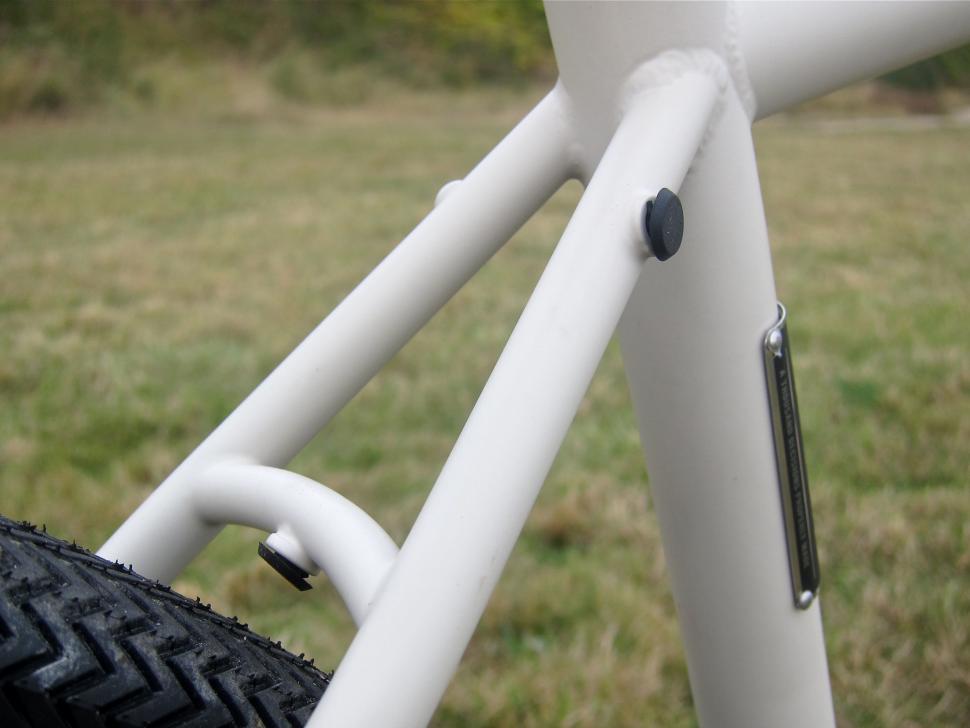
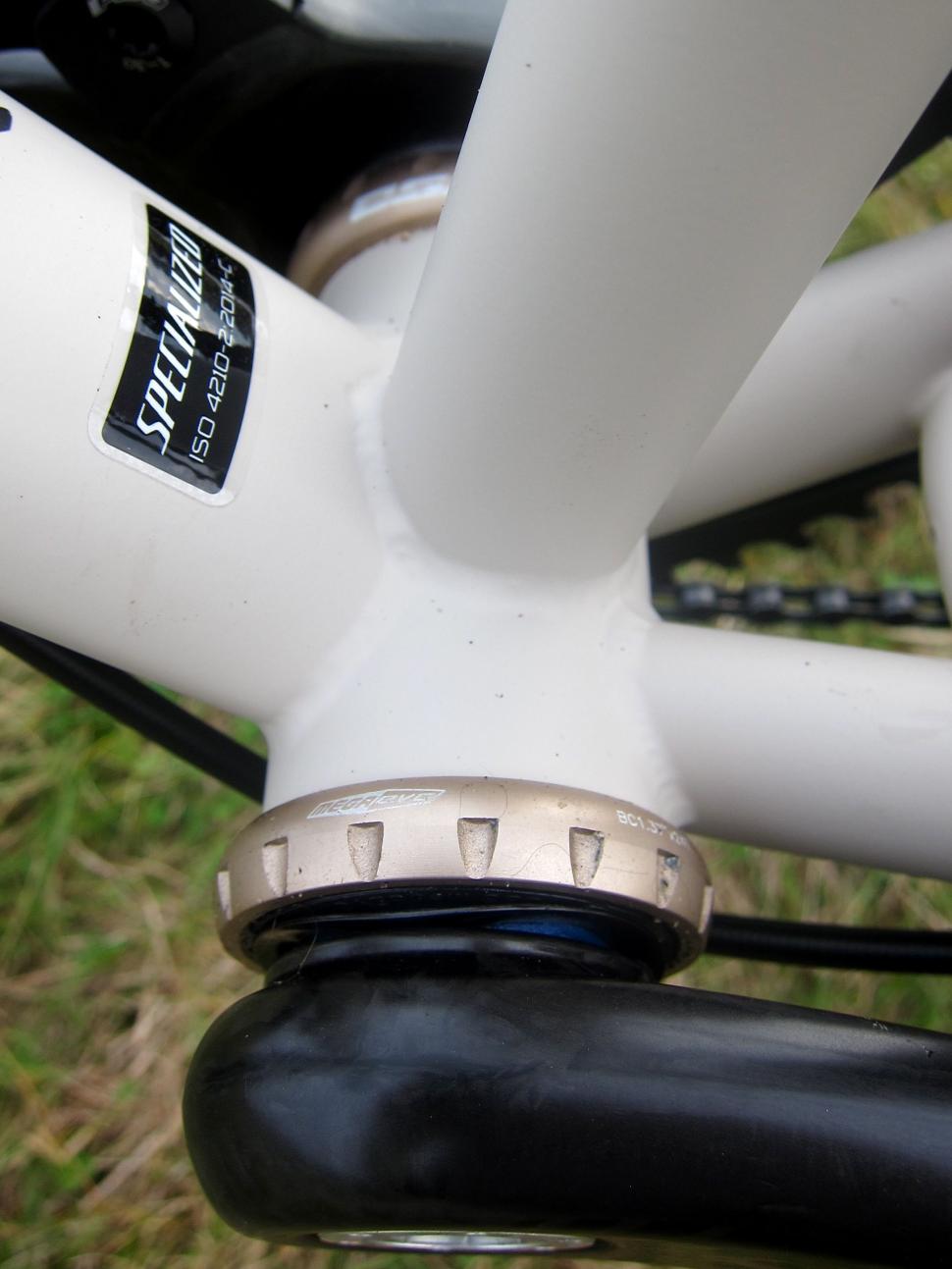



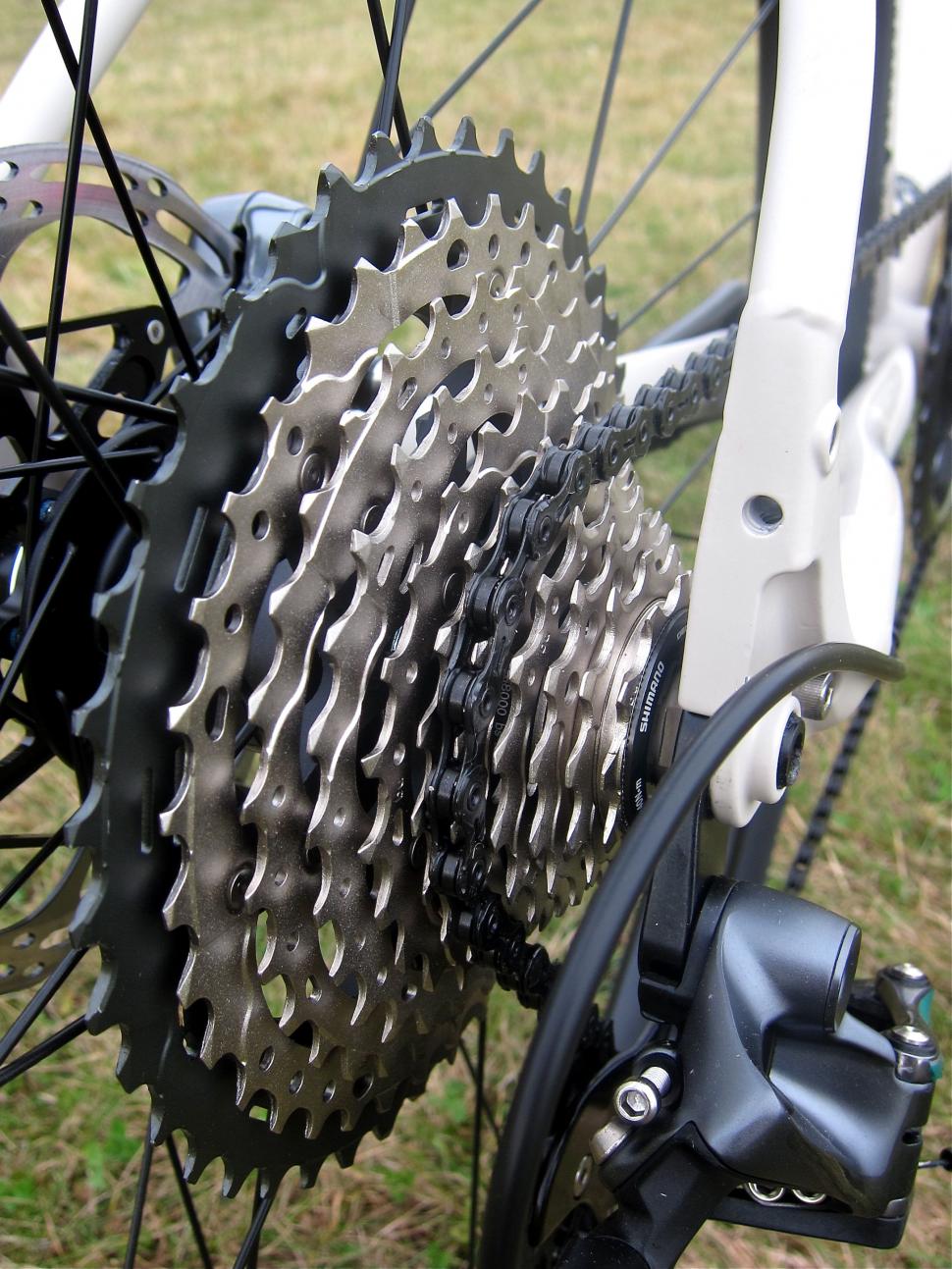
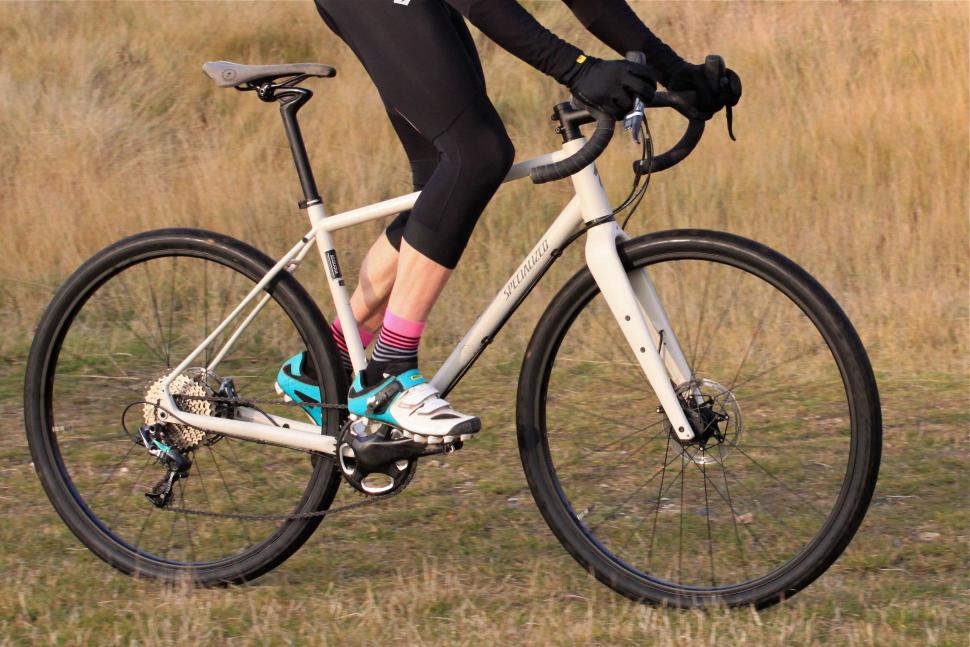
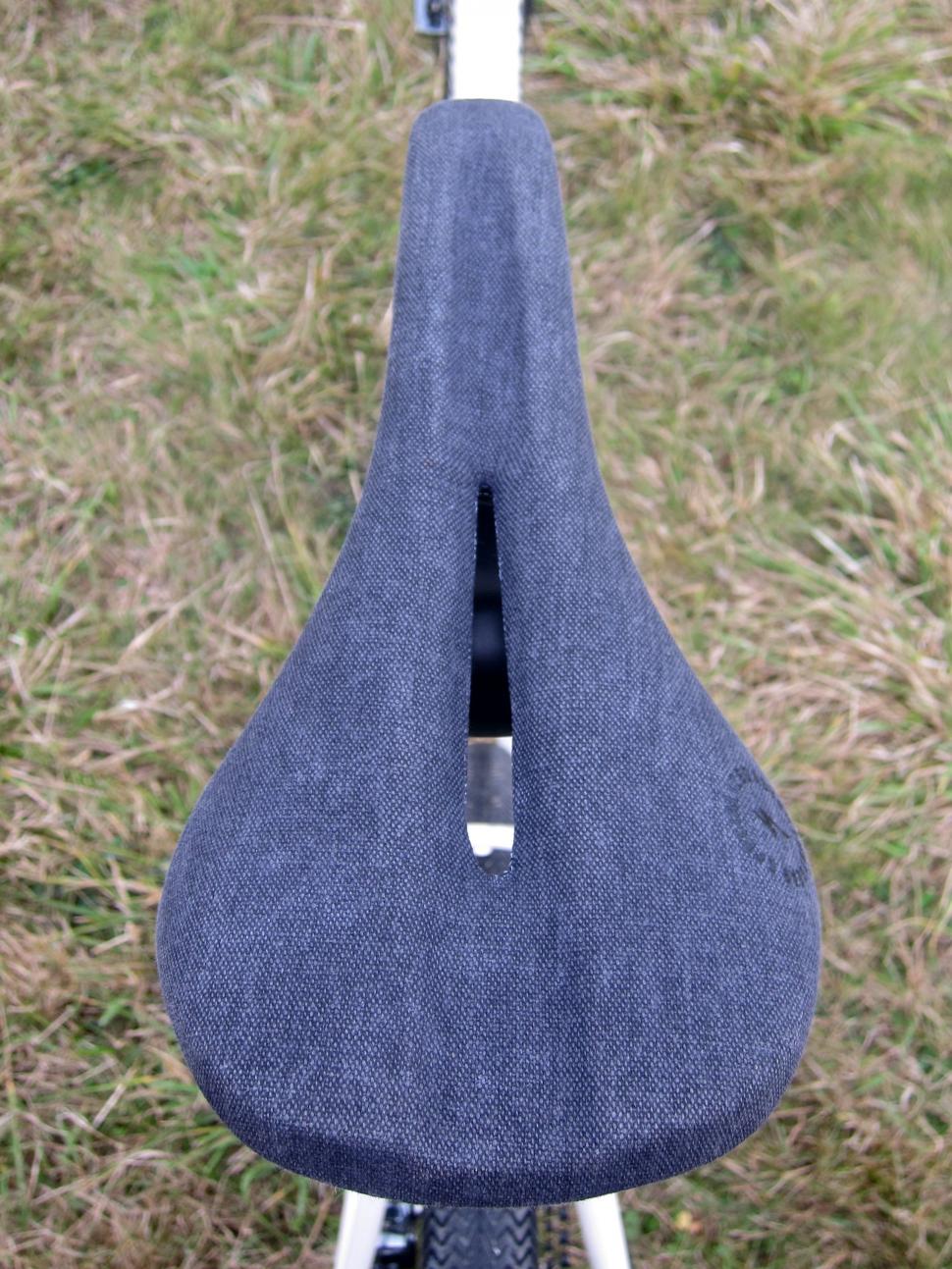

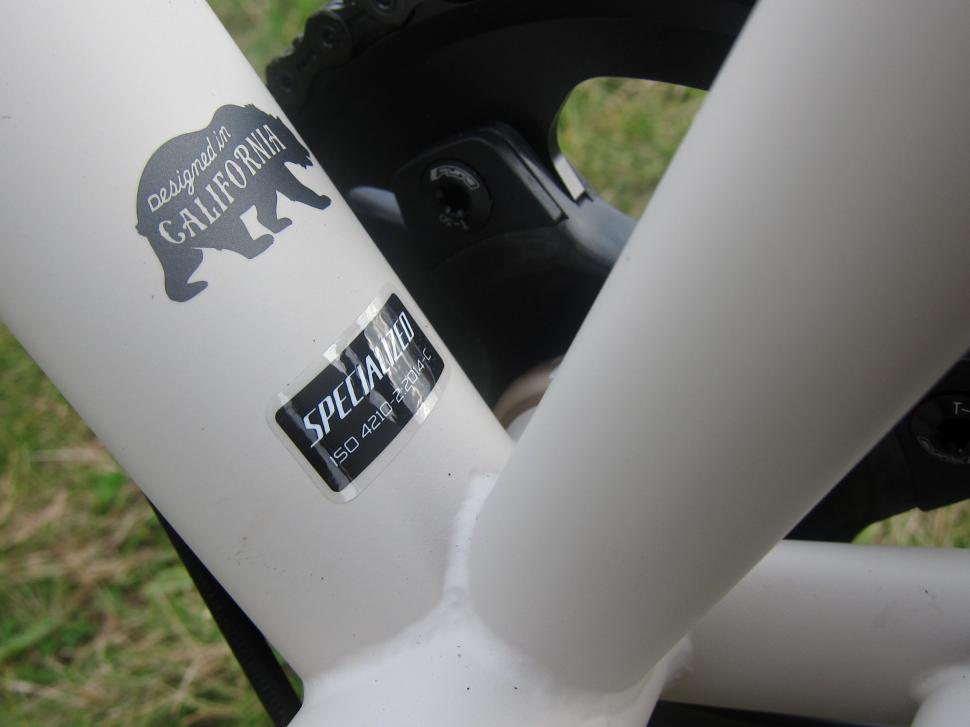


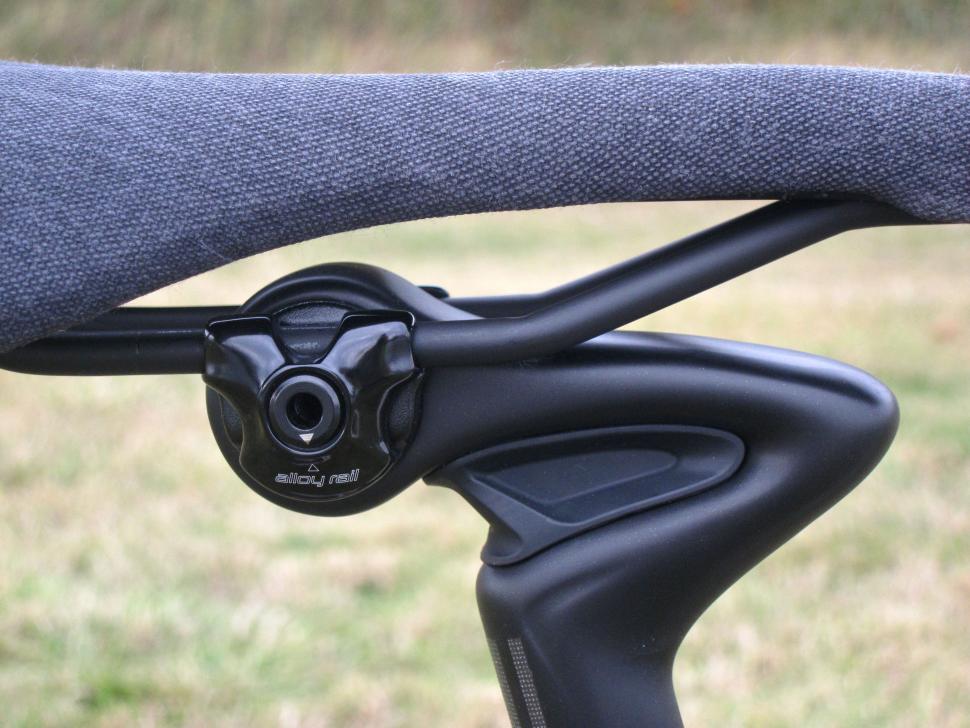
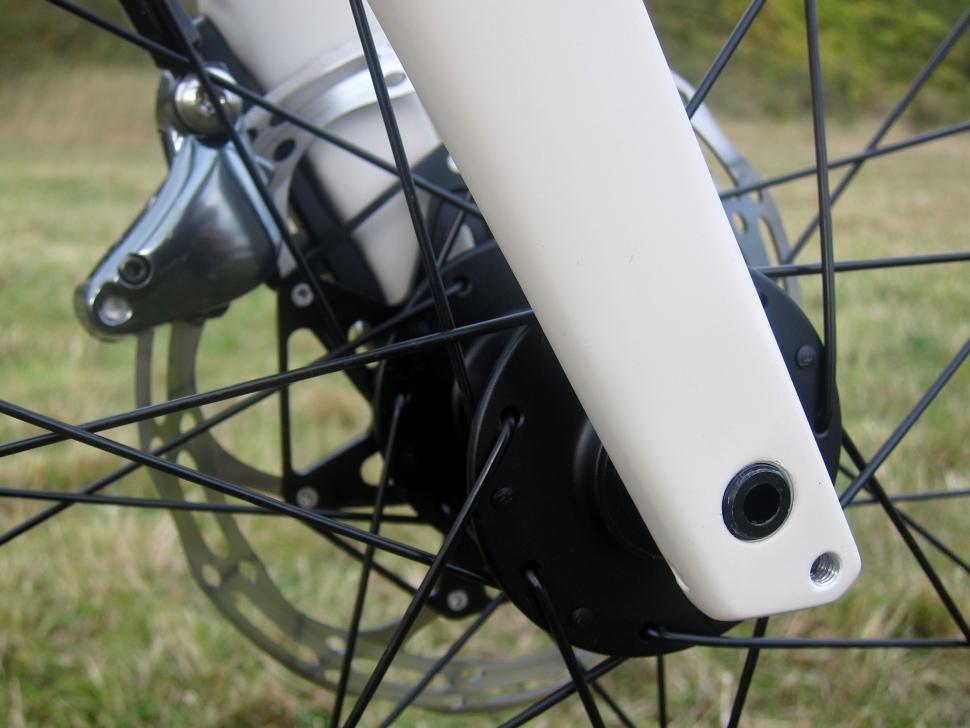
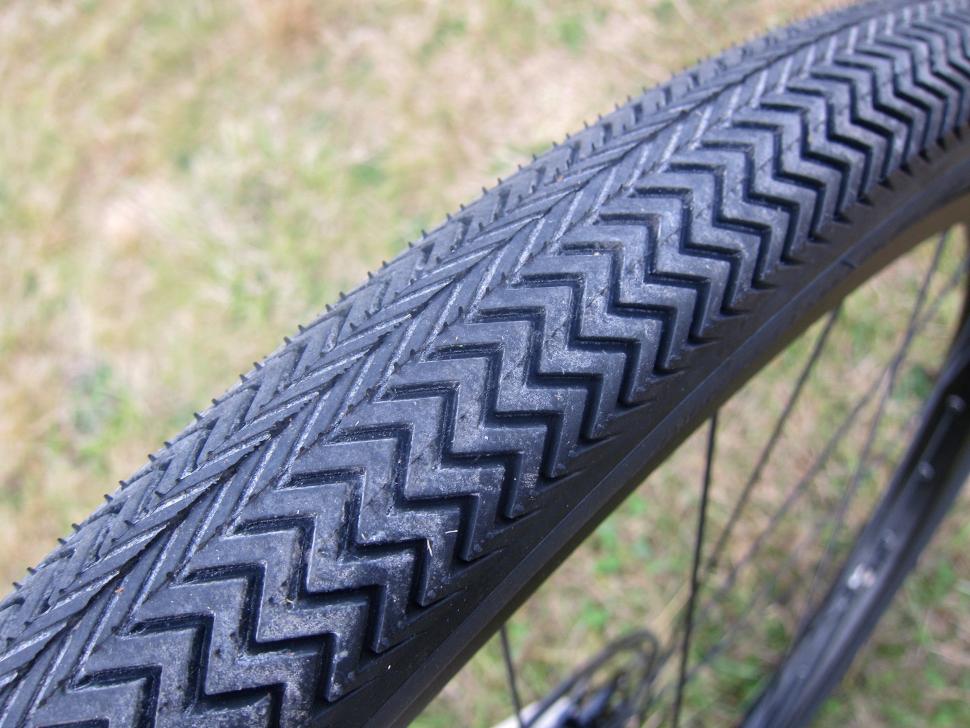
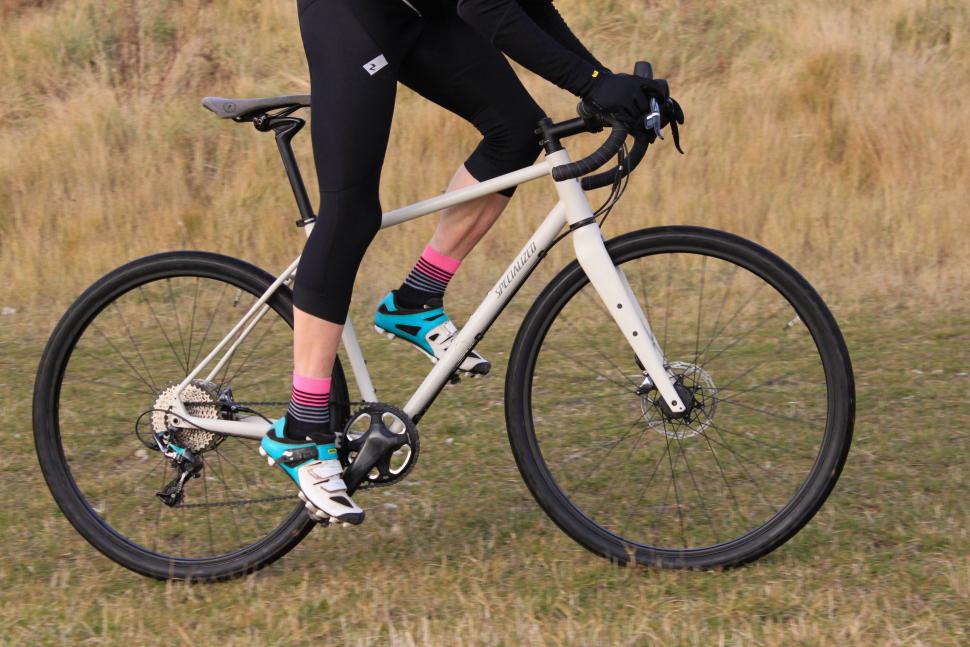


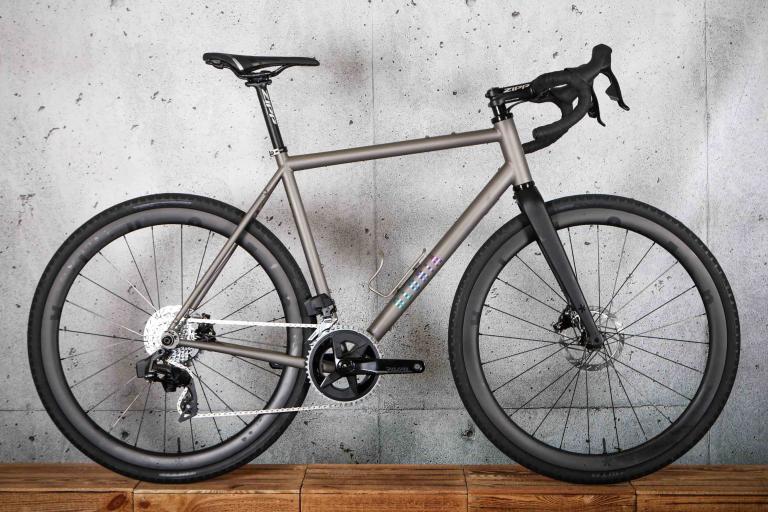
Add new comment
22 comments
Museum thread, but hey. I had one of these, before I saw this review. And it's spot on. The review, not the bike. I put up with it for a couple of months because the ride was lovely, but it was SO bloody slow and heavy I had to sell it. I never did really work out why it was so heavy, really just everything on it was a bit porky, and it added up. If you find one cheap, makes a great winter hack/commute so long as you don't have to do too many slopes...
Looking for a lightweight touring "adventure" bike. Liked the fit of the sequoia which was recommended by my LBS but wanted to get other options. Looking for a road bike that I can do light touring with and go off-road on occasions. Any suggestions would be appreciated. $1200 range.
the bike rocks. I bought the elite and I swapped the wheels with a XC hope wheelset.
it smooths the road, it is stable, it is not too heavy, maybe not the fastest bike but I never felt that the bike was the problem.
I had the same feeling the reviewer did not completely understand what he was riding. this is not a road bike (still you can easily stay at 35km/h in group).
I don't understand this review. The Sequoia is a bike packing design made for long endurance and packing capabilities. There is a lot of space for bags, bottles and rags. It’s clear the reviewer does not have a lot of experience in bike packing because I read a straight comparison with regular road bikes. No surprise then the outcome is not rated high.
Being a road racer myself I find myself doing other roads that I used to and that's a good thing.
I rode this bike for 160 k and it feels very stable, and predictable. On gravel and pavement, it does always what I want. Of course you can buy lighter, even touring bikes, but for a mixed terrain this might be the ticket. When touring off road in Spain I want the reliability of the steel Sequoia in stead of a Dogma F10. What is better? It depends. I rate this bike as an all rounder with speed capabilities and forest roads.
Read reviews on sites like Bikepacking.com, cyclingabout.com, bycling.com and have a more objective review.
Reviewing things in not writing your meaning seen from your eyes but place yourself (outside the box) in that spot where you review something that is made for a specific purpose, and review it from there. Internet is full of people's own opinions, the mass just follows a world seen through the eyes of media.
Not endorsed with Specialized in any way what so ever.
This review is spot on. I had pre-ordered the Sequoia based on its premise alone: aggressive geometry, modern specs, and room for wide tires. As a prior Diverge owner it had everything the Diverge lacked—on paper.
Wrong I was. It may look and cost like a sprightly steel do-it-all bike but as I discovered if you buy it based on those virtues only the most hardened masochists will not break down and weep. With a frame and wheelset needlessly built of reinforced bridge girders and re-cast anvil, the Sequoia is a sheep in wolf's clothing. A granite-hauling Ferrari. A diving bell sent on a mission to Mars. A beautiful tool frustratingly incompetent at its intended task.
Its buyer will become sysiphus incarnate, a slave forever spooling those tractor wheels up to speed and hating life.
Interesting bike: I don't have much experience with them, but Is 10kg heavy for a touring bike (which is what this seems to be to me rather than a fast & lightly loaded overnight bikepacker)?
(I think my Marin Four Corners (Steel / big tyres / braze-ons but cable not hydros etc) is about 12kg...quite a huge chunk of which, like this bike, is in the wheels at the moment!)
I'm in love with those handlebars though: I really hope they will be available as an aftermarket part!
edit: just checked (should have done before I posted, D'oh) and they are, happy days!
The Sequoia was also on my short list and was excited for my test ride back in October at my LBS. However I was just as dissappointed as VecchioJo. It was super comfortable, don't get me wrong, but it just felt.. sluggish. I'm not a reviewer myself in anyway, so I wasnt able to pin point what it extactly was that put me off.. Now I know, thanks VecchioJo!
How on earth can 42x42 be over geared? If you can't get up a hill with that ratio I suggest getting off & pushing would be your quickest and easiest option. Although it does way half a ton, so perhaps that explains the comment.
Lazy, fat, expensive and slow in any case. I suspect the design brief was to jump on both the steel is real and adventure bike bandwagons & just let the advertising dept. worry about selling the thing.
Errmm...so you've not ridden anything heavily loaded (or for that matter, one of most recumbents) ? Add say 8-9kg and good luck with the knee health, there's a reason some of us ride triples with mtb cassettes, dodgy knees or otherwise.
I wonder why so much stock Gravel bikes come with 34x32 for their granny gear which isn't even 1:1 at least. I'm planning to use a 40T up front not doing heavy loaded mountain tours on lose ground. Should be a good middleground.
If they're using standard road gears, which a lot are, it's basically as low as you can go within basic recommendations. 50-34 compact on the front and 11-32 cassette on the back with a medium cage rear derailleur.
Maybe you could put an 11-36 and a roadlink (could you possibly get by without the link?) on there or something, or just use mountain bike parts. Some good news is a few companies are coming out with smaller cranksets, 48/32 and the like.
you da man.jpg
Nice bike but it should be offered at half price with a steel fork and yes we are lazy and this bike overgeared. An steel adventure bike with carbon fork is like a giant with feet of clay. The paintjob rocks though!
You can get one with a steel fork and wider gear range. It's under half the price!
My mate has the Elite. Only problem he's had is the front hub cones coming loose. Drivetrain works as well as you'd want. I'm going to try the bigger cassette on my Arkose with 105 to see if it works there as well.
So the Elite version has a 48/32 crankset with an 11-36t Cassette, which requires the rear derailleur to have a 41t capacity - well beyond Shimano's 37T stated max capacity for the 105 GS Rear Derrailleur. Have they done anything else to achieve this and do you know how well it works in practice?
I'd take those quoted Shimano max sprocket size/capacity listings with a pinch of salt. E.g when XT RD-M8000-GS was released they stated 42T max sprocket. A year later they introduce the 11-46T and low and behold the same mech can now accomodate a 46T max sprocket. THey have a long history of consverative guidelines generally only matched to the stuff they make.
When announced, it was my dream n+1 bike. After a closer look, I have concluded that there is too much cost cutting (Shimano cassette, rival brakes) to justify such a high price. I also could not get a test drive at my local shop, so I decided to go with Kona Sutra LTD and for half the price I got a very similar bike (steel frame, 1x gearing).
Definitely worth buying the Elite and pocketing the cash.
So it's an adventure bike, essentially targeted at wealthy flatland dwellers for communting, made of cheap steel... and it's not a bad bike?
O'rly!
there isn't much to compete with at this level of adventure bikes, as it's either raleigh's roker or jamis's renegade or a from a small frame builder, like shand and mason, £2500 is average for this level of specification as both the raleigh and jamis are either force or ultegra but are also carbon instead of steel, and it's a bit annoying that it's a grand between this and the elite, as that is a huge jump when they could have added a forth option for the £2000 price point.
They want TWO AND A HALF THOUSAND POUNDS for this?!!!
My word.